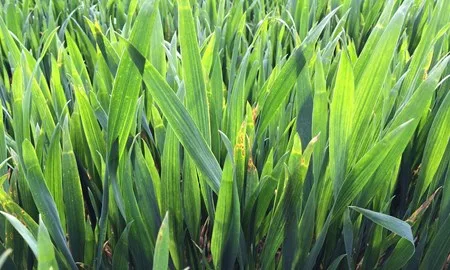Published on 19th April 2021
Disease Management
Why is the T1 spray timing so critical for Septoria control and yield protection?

Keeping the flag leaf clean of Septoria and other diseases is crucial to protecting your wheat crop’s yield potential. But, did you know that leaf 3 and the T1 spray timing is integral to keeping the flag leaf disease-free?
Keeping the flag leaf clean of Septoria and other diseases is crucial to protecting your wheat crop’s yield potential. But, did you know that leaf 3 and the T1 spray timing is integral to keeping the flag leaf disease-free?
The flag leaf has the biggest impact on yield, so it’s vital to keep this leaf free of Septoria.
Septoria is most commonly spread up the crop canopy by rain-splash but leaf-to-leaf transfer of spores is also a factor. This happens when thousands of spores from Septoria fruiting bodies (pycnidia) are released onto the leaf surface in damp conditions, either from rain or dew. Once the spores are on the leaf surface, they can quickly spread to adjacent or overlapping leaves. Through this leaf-to-leaf method of spore transfer, Septoria can spread even when there is little wind or rain.
It’s important to recognise that leaf 3 is a key source of infection for the flag leaf. This is because at GS37 (flag leaf just visible) the flag leaf starts to emerge just below the tip of leaf 3.
If the tip of leaf 3 is infected with Septoria, there is a high risk of spore transfer to the emerging flag leaf. This is why the timing of your T1 spray is vital. Any delay to the T1 spray means that the tip of leaf 3 is exposed to Septoria for longer, increasing the risk of infection to both leaf 3 and the flag leaf.

A robust T1 application means that by GS39, your T2 fungicide will continue to provide ongoing protection to the now fully-emerged flag leaf.
How to best protect the flag leaf from Septoria at T1?
Getting the timing right for your T1 spray can be difficult when you’re also juggling individual crop conditions, and the unpredictable spring weather.
Ascra’s all round disease control and rate flexibility enables you to adjust the dose rate to suit disease pressure or risk, Find out more about Ascra




